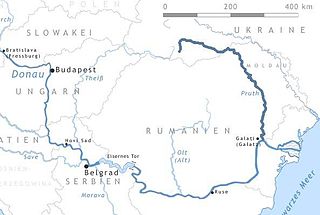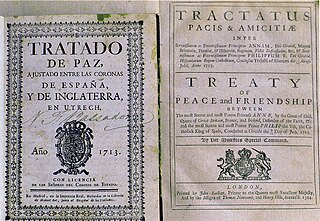Related Research Articles

1711 (MDCCXI) was a common year starting on Thursday of the Gregorian calendar and a common year starting on Monday of the Julian calendar, the 1711th year of the Common Era (CE) and Anno Domini (AD) designations, the 711th year of the 2nd millennium, the 11th year of the 18th century, and the 2nd year of the 1710s decade. As of the start of 1711, the Gregorian calendar was 11 days ahead of the Julian calendar, which remained in localized use until 1923. In the Swedish calendar it was a common year starting on Sunday, one day ahead of the Julian and ten days behind the Gregorian calendar.

1713 (MDCCXIII) was a common year starting on Sunday of the Gregorian calendar and a common year starting on Thursday of the Julian calendar, the 1713th year of the Common Era (CE) and Anno Domini (AD) designations, the 713th year of the 2nd millennium, the 13th year of the 18th century, and the 4th year of the 1710s decade. As of the start of 1713, the Gregorian calendar was 11 days ahead of the Julian calendar, which remained in localized use until 1923.

William Lowther, 2nd Earl of Lonsdale PC, FRS, styled Viscount Lowther between 1807 and 1844, was a British Tory politician.
This is a list of people who have served as Lord Lieutenant of Essex. Since 1688, all the Lord Lieutenants have also been Custos Rotulorum of Essex.

James Cecil, 1st Marquess of Salisbury,, styled Viscount Cranborne until 1780 and known as The Earl of Salisbury between 1780 and 1789, was a British nobleman and politician.

George Legge, 3rd Earl of Dartmouth KG, PC, FRS, styled Viscount Lewisham until 1801, was a British politician who sat in the House of Commons from 1778 to 1784.

General William Stanhope, 2nd Earl of Harrington was a British politician and soldier.

Brownlow Cust, 1st Baron Brownlow, known as Sir Brownlow Cust, 4th Baronet, from 1770 to 1776, was a British Tory Member of Parliament.
Gentleman of the Bedchamber was a title in the royal household of the Kingdom of England from the 11th century, later used also in the Kingdom of Great Britain.

Robert Edward Petre, 10th Baron Petre was a British peer, the son of Robert Edward Petre, 9th Baron Petre (1742–1801) and his first wife, Anne Howard (1742–1787).

William Henry Fortescue, 1st Earl of Clermont KP was an Irish peer and politician.
The High Sheriff of Louth was the Crown's representative for County Louth, a territory known as his bailiwick. Selected from three nominated people, he holds his office over the duration of a year. He has judicial, ceremonial and administrative functions and executes High Court Writs.
Sir Patrick Murray of Ochtertyre, 6th Baronet FRSE (1771–1837) was a Scottish advocate, landowner and politician, serving as MP for Edinburgh from 1806 to 1812 and Baron of the Exchequer in 1820. He is sometimes referred to as Sir Peter Murray.
References
- ↑ "Fellows of the Royal Society". London: Royal Society. Archived from the original on 2015-03-16.
- ↑ Proceedings of the Suffolk Institute of Archaeology. vol. 10. 1900. p. 356.